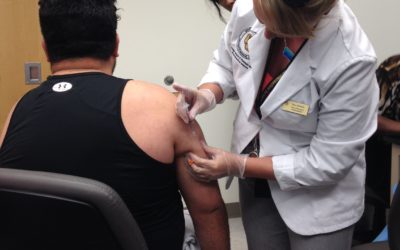How can I Reduce my Diabetes Risk?
Identifying a primary care physician and scheduling regular check-up visits will be the most beneficial step as your physician can tailor monitoring and diabetes risk reduction strategies to each individual patient based on their needs. This includes assessing both modifiable and non-modifiable risk factors.
Non-modifiable risk factors are those that you do not have control over and unfortunately cannot change. This includes your family history (do you have a close relative with diabetes?), your race and ethnicity (higher risk associated with African American, Latino, Native American, Asian American, and Pacific Islander), your age (>45 years old have a higher risk) and certain clinical conditions associated with insulin resistance that your physician can help identify.
Modifiable risk factors are those that you and your physician can work together to address and create a plan to reduce the impact they have on the development of diabetes.
- These include your weight (overweight and obesity increase your risk),
- physical inactivity,
- high blood pressure,
- high cholesterol,
- certain heart conditions,
- and continued high A1C (measure of blood glucose).
For type 1 diabetes, your family history is the most important risk factor your physician will discuss with you. For type 2 diabetes, it is strongly associated with physical inactivity, obesity, family history and other health conditions you may have, such as high blood pressure, high cholesterol, and heart disease. If you are a planning to become pregnant or are already pregnant, your OBGYN will evaluate and discuss your risks with you over the course of your routine pregnancy care appointments, if applicable.

Diabetes Risks
Lifestyle modifications are a great way to reduce your risk of diabetes.
This can include weight loss through eating a healthy diet and regular physical exercise. Here are some general recommendations for those at high risk of developing diabetes, with prediabetes, or those who have received a diagnosis of type 2 diabetes:
1. Weight loss through eating a healthy diet and reducing calorie intake – there is no one-size-fits-all approach but commonly recommended diets include the DASH diet, Mediterranean-style, plant-based, or low-carbohydrate diets
2. Increase your intake of omega-3 fatty acids found in fish, flaxseed and soy
3. Choose healthier carbohydrate containing foods such vegetables, fruits, whole grains, legumes and dairy products over foods with high fat, sugar or sodium
4. Avoid beverages with sugars and sweeteners added
5. Reducing the amount of added salt will also help with reducing high blood pressure
6. Perform ~30 minutes of aerobic exercise 5 days per week or 150 minutes spread over at least 3 days. Include weight lifting at least twice weekly.











